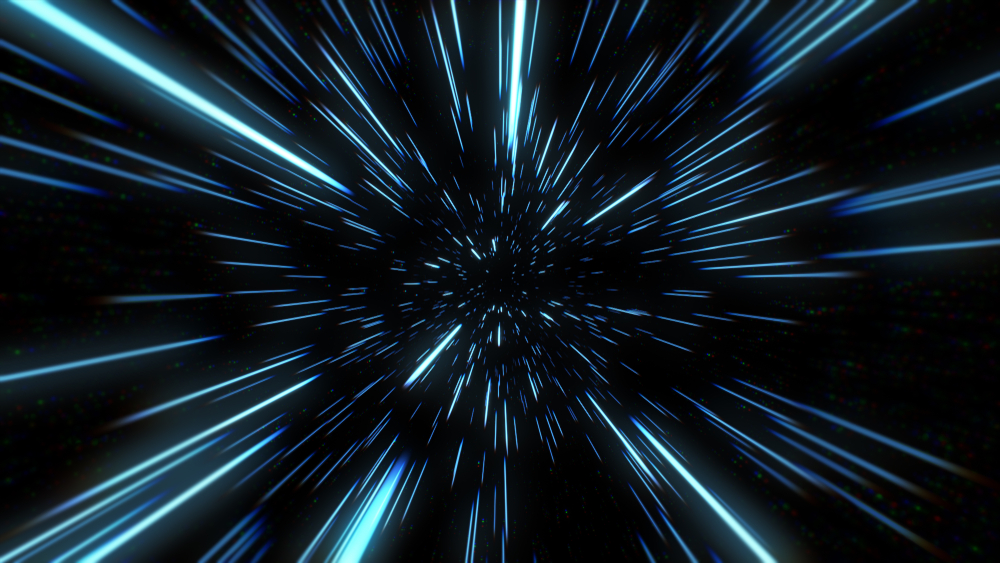
Our universe began with a puzzle. For 100 million years after the big bang, it expanded. Then something strange happened – this expansion suddenly accelerated and has continued to accelerate ever since.
Today, cosmologists believe that some pressure must have forced this acceleration, all fueled by vast amounts of energy from an unknown source. Cosmologists call it dark energy. But why this accelerating expansion happened, and why it happened at this time, is one of the great unsolved mysteries in science.
Now University of Hawaii at Honolulu’s Duncan Farah and colleagues think they know the answer. They say the acceleration is the result of a previously unknown interaction between black holes and spacetime. As spacetime expands, they say, this interaction makes black holes more massive, and that extra mass accelerates the expansion of the universe, creating the accelerated expansion we see today.
Theories of space-time
First a bit of background. The new idea stems from the work of theoretical physicists who recently showed that black holes cannot be independent of the space-time in which they exist. Instead, spacetime and black holes must be connected in such a way that a change in the properties of one immediately affects the properties of the other.
So how can this manifest itself? One possibility is that any stretching of spacetime as it expands makes black holes more massive. An analogous effect is the way the same stretching causes light from the early universe to redshift as it travels through space and time to be observed today.
Farah and colleagues believe that if this merger did occur, then black holes in the early universe would be less massive than those in the recent past. So they looked for evidence by studying supermassive black holes at the center of galaxies.
It turns out that supermassive black holes in the nearer, more recent universe are up to 20 times more massive than those in the more distant, early universe (relative to the mass of the stars around them). “We find evidence for cosmologically related mass growth among these black holes,” they say.
This growth cannot be explained by black holes gobbling up nearby stars – there aren’t enough of them. Nor can it be explained by the merging of supermassive black holes when galaxies collide, as this would not change the mass ratio of nearby stars.
Instead, Farah and colleagues say it’s evidence that the black hole’s mass should be bound to spacetime and should increase as the universe expands. Indeed, the change in mass over time is consistent with this explanation.
But this increase in mass itself exerts pressure on spacetime. Farah and colleagues say that pressure, or dark energy, is causing the expansion of the universe to accelerate. Indeed, their calculations show that this pressure is of the order of magnitude needed to explain the observed expansion rate.
It also explains why the accelerated expansion did not begin until after the universe was 100 million years old, a time cosmologists refer to by its redshift, denoted z. In this case z ∼ 0.7.
The answer is because black holes form when stars die and so can only begin to affect the expansion after the first stars have formed. This was 100 million years after the big bang.
“Thus, we hypothesize that stellar remnant black holes are the astrophysical origin of dark energy, explaining the onset of the accelerating expansion at z ~ 0.7,” the team says.
A dark beginning
The same idea could explain another of cosmology’s great mysteries—why the structure of the universe we can see seems to be affected by the gravitational pull of things we can’t see, so-called dark matter.
One hypothetical explanation for this is that dark matter takes the form of massive compact halo objects, or MACHOs, which drift in interstellar space but do not emit much radiation and are therefore difficult to observe.
Farah and Co.’s theory is applicable to black holes of all scales, from those a few times the mass of our sun to those many millions of times larger. They indicate that the smallest black holes form a population that is consistent with MACHO properties.
“If these BHs are distributed in galactic haloes, they will form a population of massive compact halo objects,” say Farrah and co. In other words, their theory also explains the origin of dark matter.
The team goes on to make several predictions that could make or break their theory. For example, they say the effect of this black hole-space-time coupling should have a visible effect on the cosmic microwave background, the echo from the big bang that astronomers have been observing with increasing precision for decades. Farrah and co also predict how the binding effect should affect the properties of the mysterious gamma-ray bursts that astronomers observe from different parts of the universe.
And they say that the relationship between black holes and space-time should affect the rate at which small black holes merge. “This could lead to a significant increase in the merger rate,” they say. The merging of small black holes has recently become visible thanks to the detection of gravitational waves.
These predictions should be easily testable in the near future. If Farrah and co are right, then the conformation of their observational idea should begin to percolate over the next few months and years.
There will also be inevitable arguments. But make no mistake—explaining the origins of dark energy and dark matter will be a major breakthrough in astronomy and solve one of the outstanding mysteries of our time.
Ref: Observational evidence for the cosmological binding of black holes and its implications for an astrophysical source of dark energy: arxiv.org/abs/2302.07878

